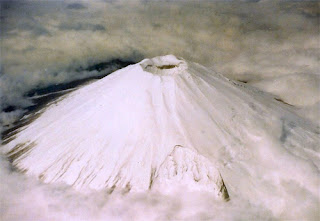When I engaged in my research about the construction of the
first transcontinental railroad in preparation for writing my trilogy, I
discovered the delightful, comprehensive reports that Henry Morton Stanley
wrote for the St. Louis Missouri Democrat in the late 1860s. As a youth, I was fascinated with the history of world discovery and had read
books about the man who uttered the famous phrase: “Dr. Livingstone, I presume?”
To my surprise, I discovered that Stanley’s “explorations” included extensive travel in the western United States. Stanley’s newspaper articles are contained in his autobiographical book My Early Travels in America and Asia, Volume 1. In my book, Eagle Talons, The Iron Horse Chronicles—Book One, I initially included Stanley as a historical character my protagonist, Will Braddock, meets in Julesburg, Colorado, in 1867. Subsequently, I eliminated Stanley, deciding it was an “information dump.” I did rely upon Stanley’s extensive descriptions of the hell on wheels town of Julesburg and the dozens of wagon trains gathered in eastern Colorado.
To my surprise, I discovered that Stanley’s “explorations” included extensive travel in the western United States. Stanley’s newspaper articles are contained in his autobiographical book My Early Travels in America and Asia, Volume 1. In my book, Eagle Talons, The Iron Horse Chronicles—Book One, I initially included Stanley as a historical character my protagonist, Will Braddock, meets in Julesburg, Colorado, in 1867. Subsequently, I eliminated Stanley, deciding it was an “information dump.” I did rely upon Stanley’s extensive descriptions of the hell on wheels town of Julesburg and the dozens of wagon trains gathered in eastern Colorado.
In searching for books containing information about Stanley
that would appeal to middle grade readers, I found two older history/biography
books. Unfortunately, I have not located any historical fiction nor have I
found any recent history books on the subject. Certainly, Stanley’s own
autobiographies are readable by middle grade students. Stanley was a prolific
writer, and his works cover all aspects of his interesting life.
Henry Stanley and the
European Explorers of Africa by Steven Sherman, Chelsea House Publishers,
New York and Philadelphia, 1993, presents a broad description of the better
known explorers of Africa. Sherman
introduces the reader to the efforts of several African explorers, including Mungo Park, Hugh
Clapperton, Richard Burton, John Speke, and of course David Livingstone and
Henry Morton Stanley. Sherman’s book includes a short summary of Stanley’s life
prior to his explorations in Africa. The reference to his work as a journalist
in the American West is brief and provides little information about that period
of Stanley’s life. The book does contain extensive modern and period illustrations and maps that make for an interesting read.
Henry Stanley and
David Livingstone by Susan Clinton (a volume in The World’s Greatest Explorers series), Childrens Press, Chicago,
1990, might more appropriately be classified as a dual biography. Clinton
provides alternating chapters on the lives of the two explorers. She
delves into their early years in some detail. The reader learns that Stanley’s
birth name was John Rowlands, the son of an unwed mother. At age seventeen, he
escaped his dismal life in Wales and sailed as a cabin boy to America. He
deserted in New Orleans, where an English cotton broker took him under his
wing. The ensuring relationship resulted in John changing his name to that of
his new mentor, Henry Morton Stanley. The American Civil War began when Stanley
was twenty years old. He enlisted in the Confederate Army and was captured at
the Battle of Shiloh. After several weeks in a northern prison camp, he switched
sides. He only lasted a few days as a Yankee because he came down with
dysentery, and the Union Army discharged him. Over the next few years he bounced
around at various jobs including merchant seaman and legal clerk. He even tried
his hand at prospecting for gold in Colorado. In 1866 Stanley began submitting
articles about his travels in the American West to the St. Louis Missouri Democrat.
James Gordon Bennett, editor of the New York Herald, impressed with Stanley’s writing, hired him to find the “long-lost” Dr. David Livingstone. Early in his journey into Africa, he happened to be present in 1869 at the opening of the Suez Canal in Egypt. It was this engineering feat that put an end to one of the hoped for benefits of the first transcontinental railroad across the United States. The railroad lost the anticipated China trade to the new canal.
Stanley continued deeper into Africa in his search for the
missionary-doctor, and in late 1871 uttered: “Dr. Livingstone, I presume?”
Livingstone did not realize he was lost, and he did not want to be rescued. When
Stanley returned to England, he was snubbed by the Royal Geographic Society.
This so infuriated the new explorer that he subsequently embarked upon
additional journeys throughout Africa, becoming the first known individual to
cross the entire continent. His books describing his adventures became best
sellers, and Stanley gained the reputation of being the greatest African
explorer.
Perhaps my research contributed to the success of my first
book, because on October 24, in Ft. Worth, Texas, Eagle Talons, The Iron Horse Chronicles—Book One, was awarded the 2015 Bronze Will Rogers Medallion for historical fiction
for young readers. I obviously owe Henry Morton Stanley and his wonderfully descriptive writing for providing me with fascinating material to use about the rough and tumble life engaged in by the builders of the first transcontinental railroad.





















